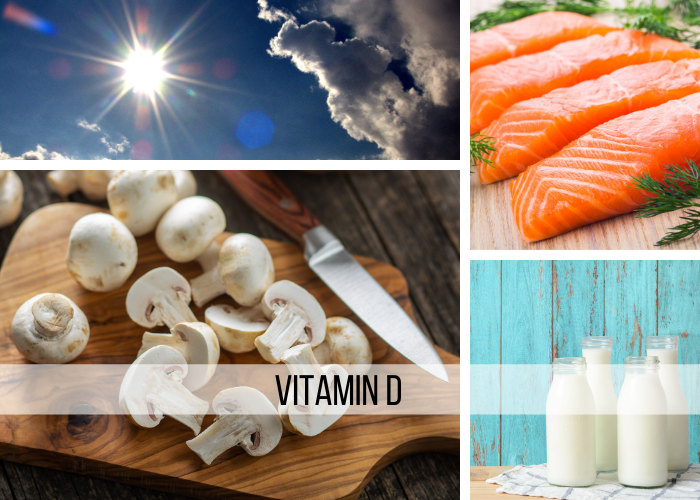Vitamin D is a fat-soluble vitamin that plays a crucial role in the maintenance of calcium levels in the body. It is important in immune system function, regulation of cell growth, and works with calcium in the formation and maintenance of bones and teeth.

How much do I need?
- 600 IU (International Units) for people 1-50 years
- 800 IU (International Units) for people over 70 years
For more recommendations for infants, children, and teens, check out the chart in CSU Extension’s Fact Sheet: Fat-Soluble Vitamins: A, D, E, and K.
Sources of vitamin D
Vitamin D can be found in milk, cheese, and fortified foods like almond milk, orange juice, soy milk, and mushrooms. Fish such as herring, salmon, and sardines are also high in vitamin D.
In addition to food sources, the body makes vitamin D in the skin when exposed to sunlight. The amount of vitamin D obtained from the sun varies based on location, elevation level, skin color, sunscreen use, cloudiness, and many more factors. The sun is important for getting enough vitamin D. For sun exposure past fifteen minutes, sunscreen should the applied to reduce the risk of sun burn.
What happens if I don’t get enough?
In developing children, too little vitamin D can result in rickets (long and soft bowed legs) and flattened back of the skull. Deficiency of vitamin D in adults may cause muscle or bone weakness as well as osteoporosis (loss of bone mass). Older adults and individuals with dark skin commonly do not get enough vitamin D from sunlight and should do so by other means.
Can I get too much?
Overdose of vitamin D most commonly occurs from consuming large amounts of supplements. It can cause excess calcium in the blood, slowed growth, smaller appetite, nausea, and vomiting. Children and infants are at a greater risk for consuming too much vitamin D because of their smaller body size.
Did You Know?
Mushrooms exposed to sunlight during growth and processing are a good source of vitamin D. The UV sunlight helps the vitamin D naturally found in mushrooms to greatly increase when exposed to the rays.
Look at the vitamin D content on food labels of mushrooms to see if they have been exposed to sunlight.


